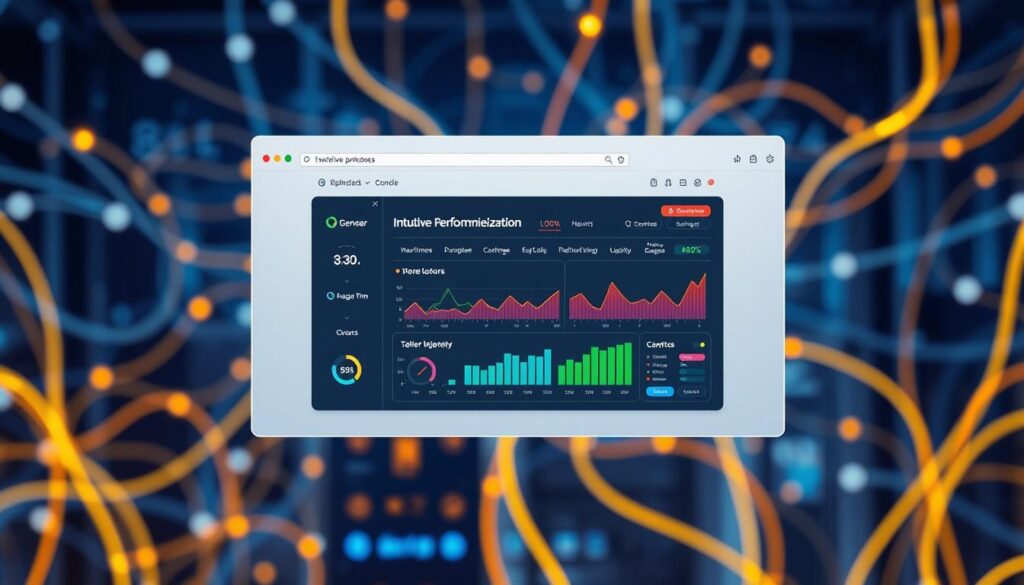The Best Browser Setups for Online Classes
Choosing the right browser can significantly impact your online learning experience. According to PCMag, there are worthy alternatives to the most commonly used browsers.
A well-configured browser setup can enhance your learning experience by providing a seamless, secure, and distraction-free environment. With numerous browsers available, each with its unique features and capabilities, selecting the right one is crucial.
This article will explore the top browser setups for online classes, comparing essential browser extensions, performance optimization, and security measures to help you make an informed decision.
Why Your Browser Setup Matters for Online Learning
The browser setup is a critical factor that influences the overall performance and productivity of online learners. As noted by TechRadar Pro, a good web browser should “offer a lightweight and intuitive interface for conducting searches and navigating the web without impacting your device or site performance.”
A well-configured browser setup is essential for a seamless online learning experience. It ensures that students can focus on their studies without interruptions caused by a slow or cluttered browser. By choosing a browser that is lightweight and intuitive, learners can improve their overall learning experience.

When it comes to online learning, a browser’s performance can significantly affect a student’s ability to access course materials, participate in discussions, and submit assignments. A browser that is optimized for performance can help reduce frustration and increase productivity, allowing students to make the most of their online classes.
Moreover, a well-optimized browser setup can enhance the overall online learning experience by providing a stable and secure environment. This is particularly important in today’s digital age, where security threats are becoming increasingly common.
In conclusion, having the right browser setup is crucial for online learning. It not only improves performance and productivity but also ensures a secure and stable learning environment. By prioritizing browser setup, students can optimize their online learning experience.
The Best Browser Setups for Online Classes: Comparing Top Options
When it comes to online classes, selecting the right browser setup is crucial for a seamless learning experience. The top browsers for online learning are Google Chrome, Microsoft Edge, and Mozilla Firefox, each offering unique features that cater to different needs.
Google Chrome, Microsoft Edge, Mozilla Firefox
Google Chrome is renowned for its compatibility and simplicity, making it a popular choice among students. Its extensive library of extensions can enhance productivity and organization, crucial for online classes. Chrome’s seamless integration with Google services like Google Drive and Google Docs further simplifies the learning process.
Microsoft Edge offers advanced features, including AI-powered tools, that can significantly enhance the online learning experience. Its built-in features like Immersive Reader can help students by reading out text and offering a distraction-free environment. Edge’s compatibility with Microsoft services makes it an excellent choice for students already using these tools.
Mozilla Firefox stands out for its strong privacy and security features, making it an excellent choice for students concerned about data protection during online classes. Firefox’s robust customization options allow users to tailor their browser to their specific needs, enhancing their overall learning experience.
Comparing these top browser options is essential to determine which setup best suits your online learning needs. Whether you prioritize compatibility, advanced features, or security, there’s a browser setup designed to enhance your online classes.
Essential Browser Extensions for Remote Learning
To maximize the effectiveness of online learning, leveraging the right browser extensions is essential. Browser extensions can significantly enhance your browsing experience by providing functionalities that improve productivity, organization, and security.
As highlighted by ZDNET, extensions such as those offered by Brave and DuckDuckGo can improve privacy and productivity. For instance, Brave’s browser extensions can block unwanted ads and trackers, creating a more focused learning environment.
Key Benefits of Browser Extensions for Remote Learning
Browser extensions offer a range of benefits that can enhance your remote learning experience. Some of the key advantages include:
Improved Productivity: Extensions like Todoist and Trello can help you manage tasks and stay organized, ensuring you keep up with your coursework.
Enhanced Privacy: Extensions such as HTTPS Everywhere and Privacy Badger can enhance your online security, protecting your personal data.

By incorporating the right browser extensions into your daily routine, you can create a more efficient and secure learning environment. Whether it’s through task management, distraction blocking, or privacy enhancement, the right extensions can make a significant difference in your online learning experience.
When selecting browser extensions, it’s crucial to choose those that align with your learning needs. Look for extensions that offer functionalities that directly benefit your remote learning experience, such as note-taking, calendar organization, or focus-enhancing tools.
Optimizing Browser Performance for Smooth Online Classes
A well-optimized browser is the backbone of efficient online classes, minimizing lag and interruptions. To achieve this, it’s essential to understand the factors that affect browser performance.
According to TechRadar Pro, factors such as JavaScript engines and the complexity of web pages can significantly impact browser speed. Optimizing these aspects can lead to a smoother browsing experience. Keeping your browser and its extensions up to date is a crucial step in this process, as updates often include performance enhancements.
Managing memory usage is another vital aspect. Closing unnecessary tabs and background applications can help allocate more resources to your online classes, ensuring that they run smoothly. Additionally, avoiding resource-intensive web pages can further enhance your browser’s performance.

By implementing these strategies, you can significantly improve your browser’s efficiency, leading to a more productive online learning experience. Regularly reviewing and adjusting your browser settings will help maintain optimal performance over time.
Efficient browser performance not only enhances your learning experience but also reduces frustration caused by technical issues. By focusing on optimization, you can create a more conducive environment for online classes.
Creating an Accessible and Secure Learning Environment
To foster an effective online learning environment, it’s vital to prioritize both accessibility and security. This involves implementing robust security measures and leveraging privacy features to protect user data.
Privacy Features, Secure Browsing
Browsers like Brave and Tor are renowned for their strong privacy features, including ad-blocking and tracking protection. These features not only enhance user privacy but also contribute to a more secure browsing experience.
By utilizing browsers with advanced privacy and security features, users can significantly reduce the risk of data breaches and cyber threats. This is particularly important in an educational context, where sensitive information is often shared.

Moreover, a secure browsing environment helps in maintaining a distraction-free learning experience. By blocking unnecessary ads and trackers, students can focus better on their studies, leading to a more productive learning environment.
In conclusion, creating an accessible and secure learning environment requires careful selection of browser setups that prioritize security measures and privacy features. By doing so, educators and students can ensure a safe and effective online learning experience.
Conclusion: Implementing Your Ideal Browser Setup
Implementing your ideal browser setup is the final step in enhancing your online learning experience. By understanding the features and capabilities of different browsers, you can make an informed decision about your browser setup.
PCMag suggests that knowing the features and capabilities of different browsers is key to making an informed decision. Incorporating essential extensions, optimizing performance, and ensuring security will help create a browser setup that meets your specific needs.
To take the final steps in optimizing your browser setup, review the key points discussed in this article. By doing so, you can create an ideal browser setup that enhances your online learning experience.
With the right browser setup, you can enjoy a seamless and secure online learning experience. Start implementing your ideal browser setup today and discover the difference it can make.







